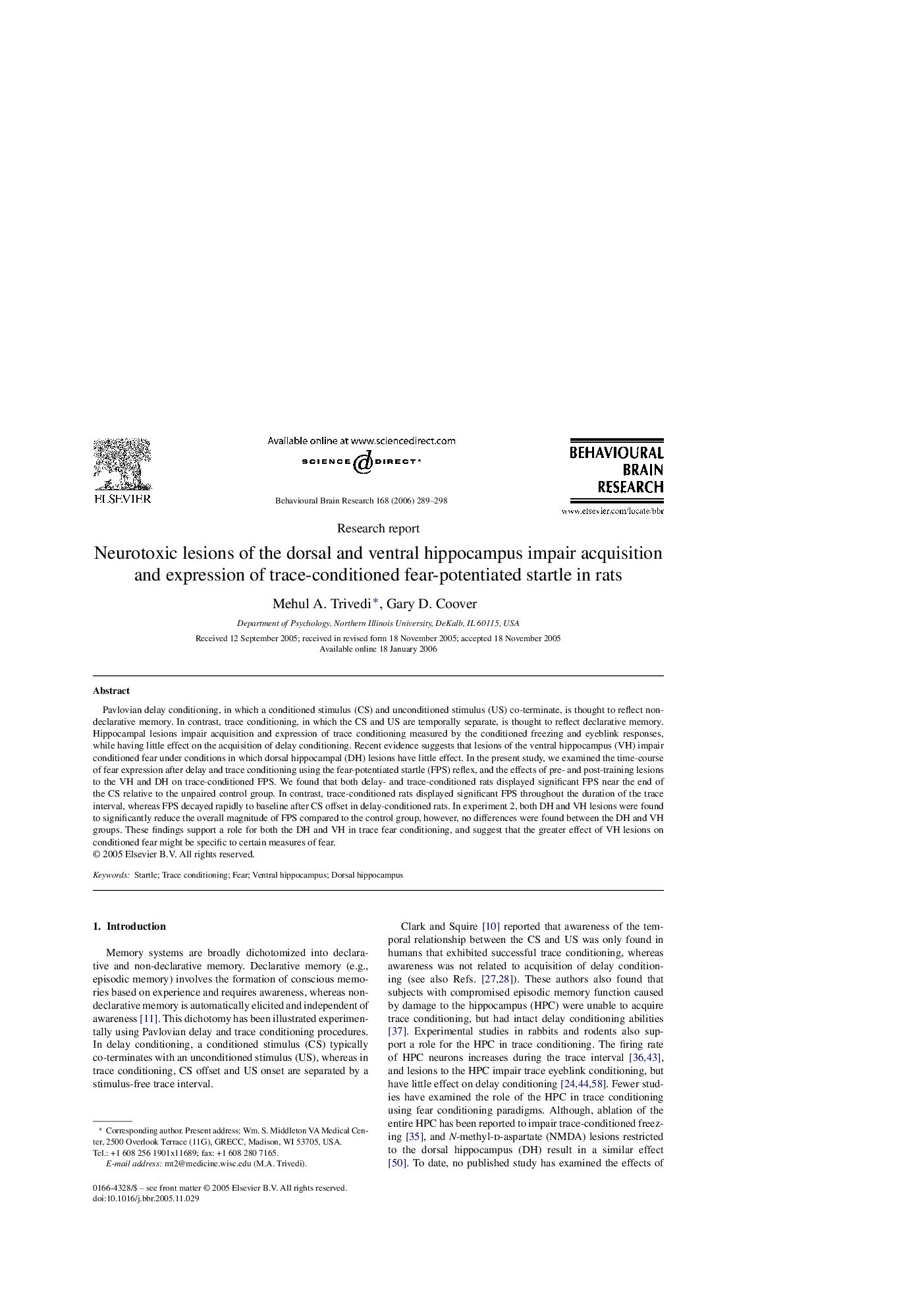| کد مقاله | کد نشریه | سال انتشار | مقاله انگلیسی | نسخه تمام متن |
|---|---|---|---|---|
| 4316354 | 1290122 | 2006 | 10 صفحه PDF | دانلود رایگان |

Pavlovian delay conditioning, in which a conditioned stimulus (CS) and unconditioned stimulus (US) co-terminate, is thought to reflect non-declarative memory. In contrast, trace conditioning, in which the CS and US are temporally separate, is thought to reflect declarative memory. Hippocampal lesions impair acquisition and expression of trace conditioning measured by the conditioned freezing and eyeblink responses, while having little effect on the acquisition of delay conditioning. Recent evidence suggests that lesions of the ventral hippocampus (VH) impair conditioned fear under conditions in which dorsal hippocampal (DH) lesions have little effect. In the present study, we examined the time-course of fear expression after delay and trace conditioning using the fear-potentiated startle (FPS) reflex, and the effects of pre- and post-training lesions to the VH and DH on trace-conditioned FPS. We found that both delay- and trace-conditioned rats displayed significant FPS near the end of the CS relative to the unpaired control group. In contrast, trace-conditioned rats displayed significant FPS throughout the duration of the trace interval, whereas FPS decayed rapidly to baseline after CS offset in delay-conditioned rats. In experiment 2, both DH and VH lesions were found to significantly reduce the overall magnitude of FPS compared to the control group, however, no differences were found between the DH and VH groups. These findings support a role for both the DH and VH in trace fear conditioning, and suggest that the greater effect of VH lesions on conditioned fear might be specific to certain measures of fear.
Journal: Behavioural Brain Research - Volume 168, Issue 2, 3 April 2006, Pages 289–298